The Whopper Dog and 32 other moments in Burger King's history
Fast food fit for a king
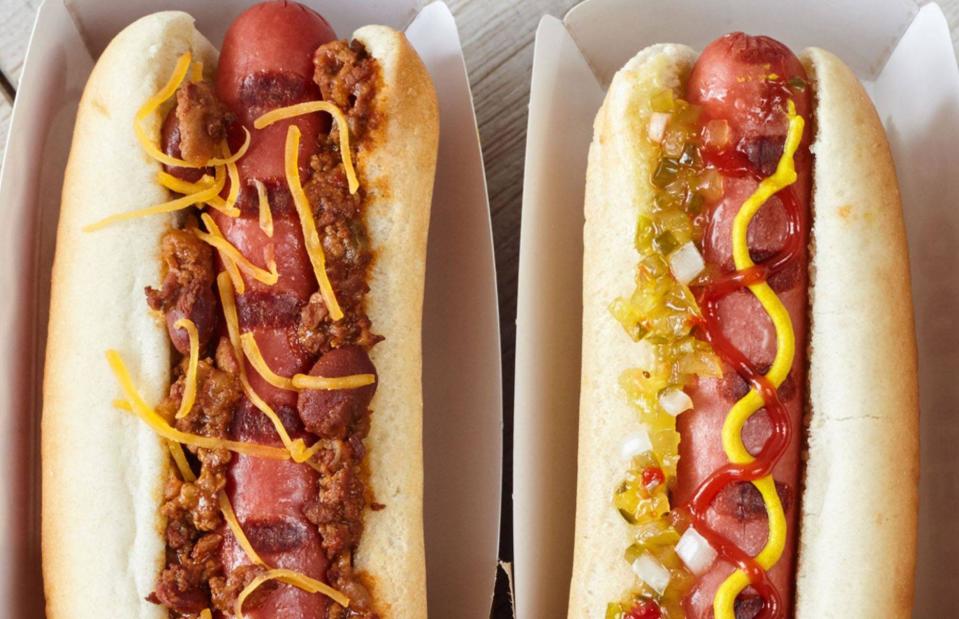
burgerking/Facebook
The second biggest burger chain in the world, Burger King and its cardboard crowns are the stuff of legend. Having started from scratch in the 1950s, Burger King was already the third biggest fast food chain in the world by the 1970s and today has around 20,000 locations globally. But how did a low-key Florida burger joint get so big? To celebrate its official 70th birthday this 1 June, we look at the rise of Burger King, from one small restaurant to fast food royalty.
Read on to discover how Burger King became the iconic chain we know and love today.
California dreamin'
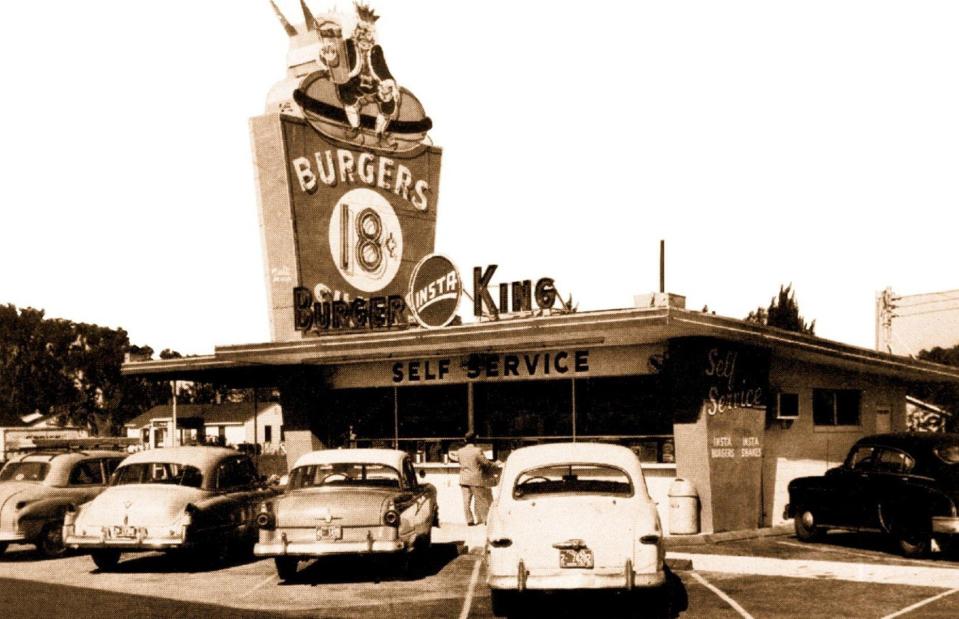
BurgerKing/Facebook
Burger King began as the project of Matthew Burns and his son-in-law Keith Cramer, who were keen to get in on the action of fast food franchising. In 1952, Matthew invited Keith to California to look at successful business operations like McDonald’s (founded in the 1940s). Taking what they had learned back to Keith’s hometown of Jacksonville, Florida, the pair launched their own restaurant, Insta-Burger King, in 1953.
Flame-grilled burgers
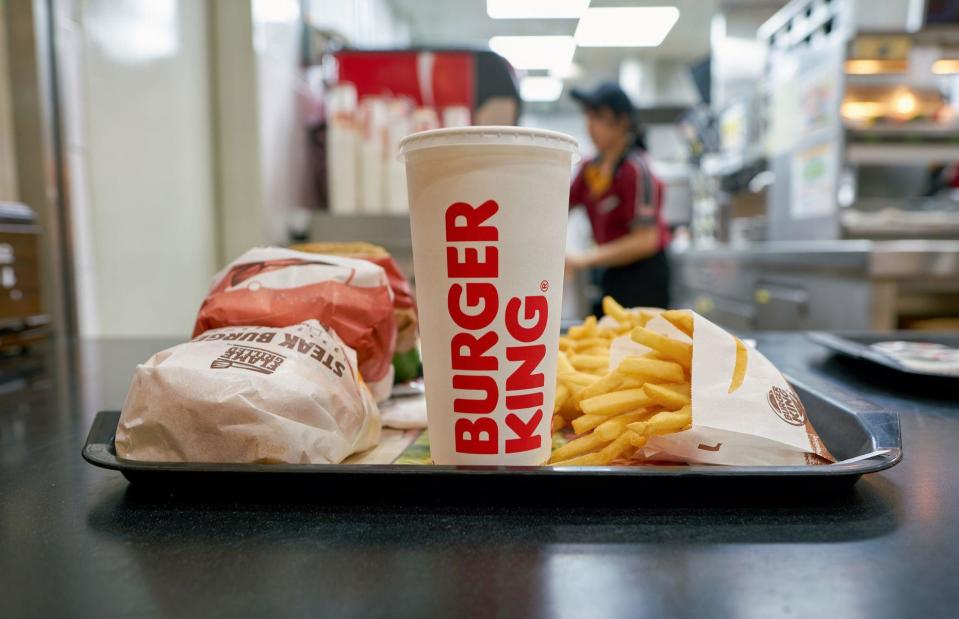
Sorbis/Shutterstock
From the beginning, Insta-Burger King's menu focused on chargrilled (rather than fried), burger patties, resulting in a distinctive smoky flavour. Things were a bit simpler in the early 1950s, though, with the menu consisting just of hamburgers, cheeseburgers, coffee and fruit pies – and nothing was priced higher than 18 cents. Around 70 years on, Burger King's flame-grilled patties remain its USP, even if the prices have changed a little.
Branching out
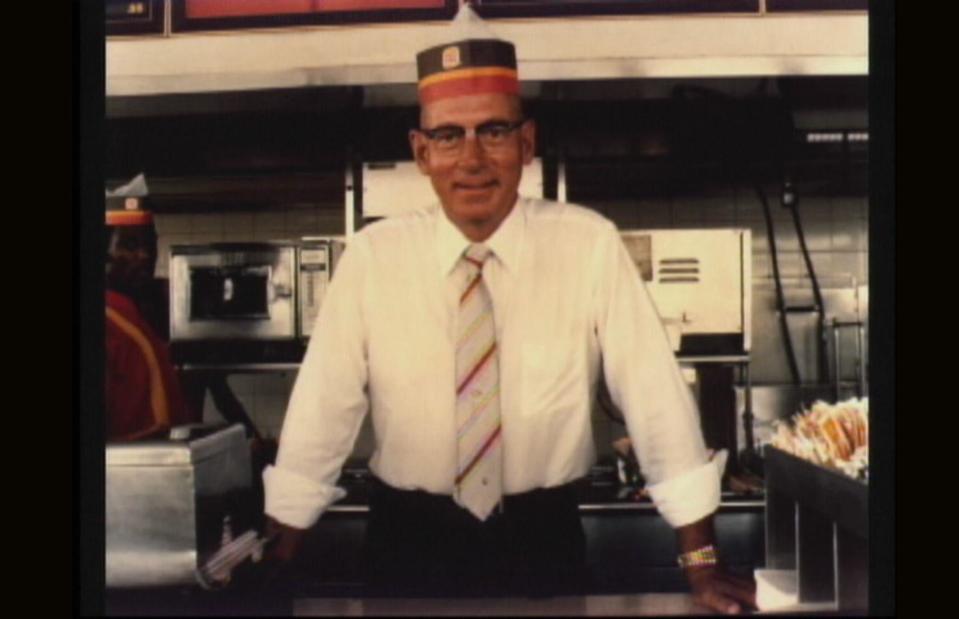
Tucker.mccormack/Wikimedia Commons/CC BY-SA 4.0
Looking to franchise, Matthew and Keith were joined by partners David Edgerton and James McLamore, who opened the second branch in Miami in 1954 – and, crucially, simplifying the name to Burger King. Armed with existing restaurant experience, David and James would go down in history as the real entrepreneurs of the company. They sharpened the business model, introduced the Whopper in 1957, and went on to purchase the company from Matthew and Keith in 1959. James is pictured here in a Burger King joint in the early 1960s.
A change of name
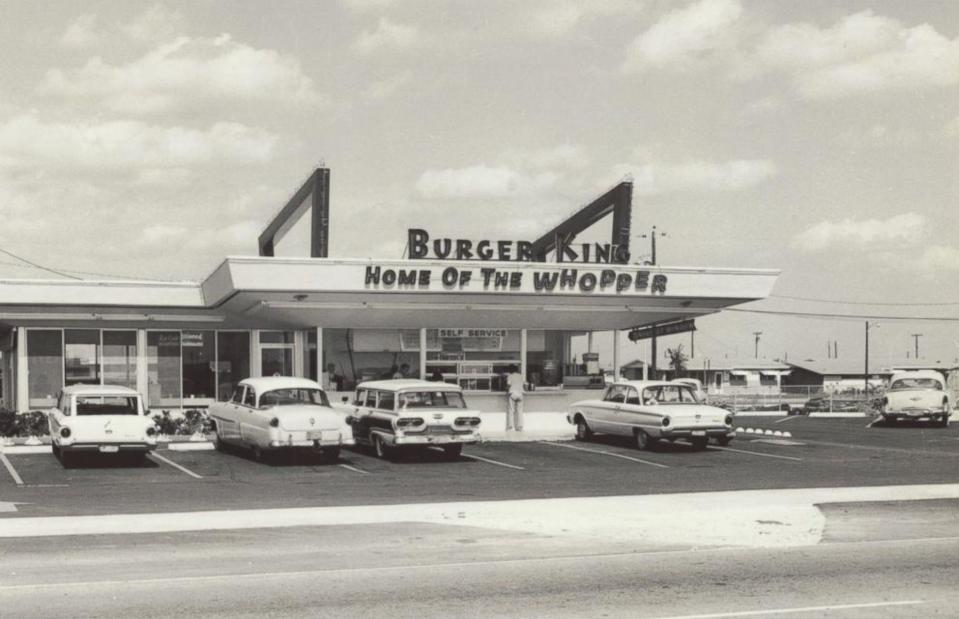
BurgerKing/Facebook
The original Insta-Burger King was so named because in 1953, Matthew and Keith had purchased rights to the Insta-Broiler: a device that could chargrill burger patties very quickly, without any loss of quality. However, the Insta-Broiler machines were prone to developing faults, easily jamming and slowing down service. Seeing the issue, James created his own flame grill instead and the ‘Insta’ was dropped from the brand name.
Introducing The King
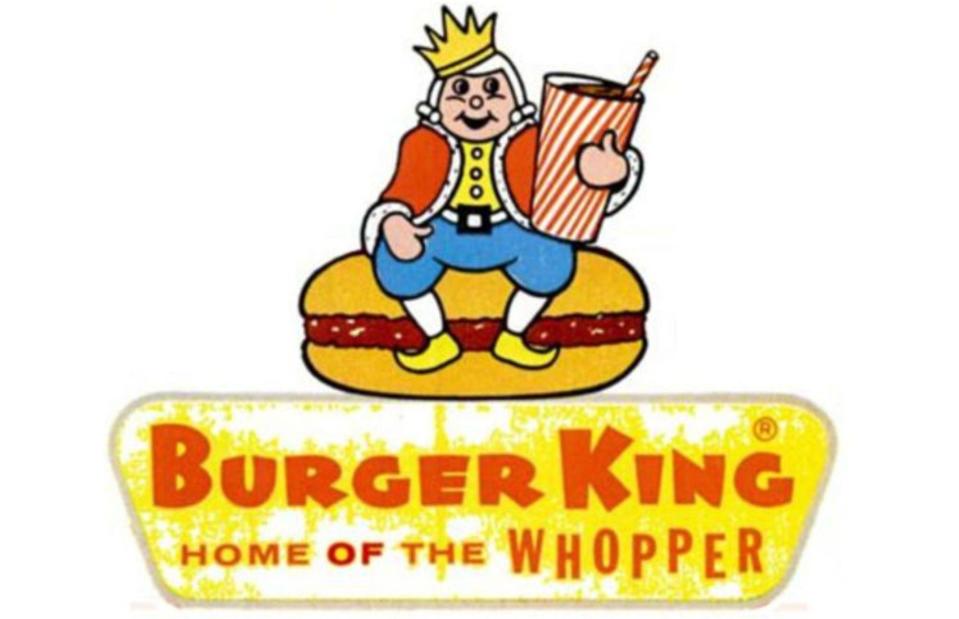
Jerem4/Wikimedia Commons/Public domain
This Burger King character was created in 1955, appearing as part of the restaurant’s sign. Early iterations of the Burger King logo showed the jovial King character seated on a burger throne, clutching a large drink – first on its own above the restaurant and later (as pictured here) above the company’s new name.
A whopping big welcome
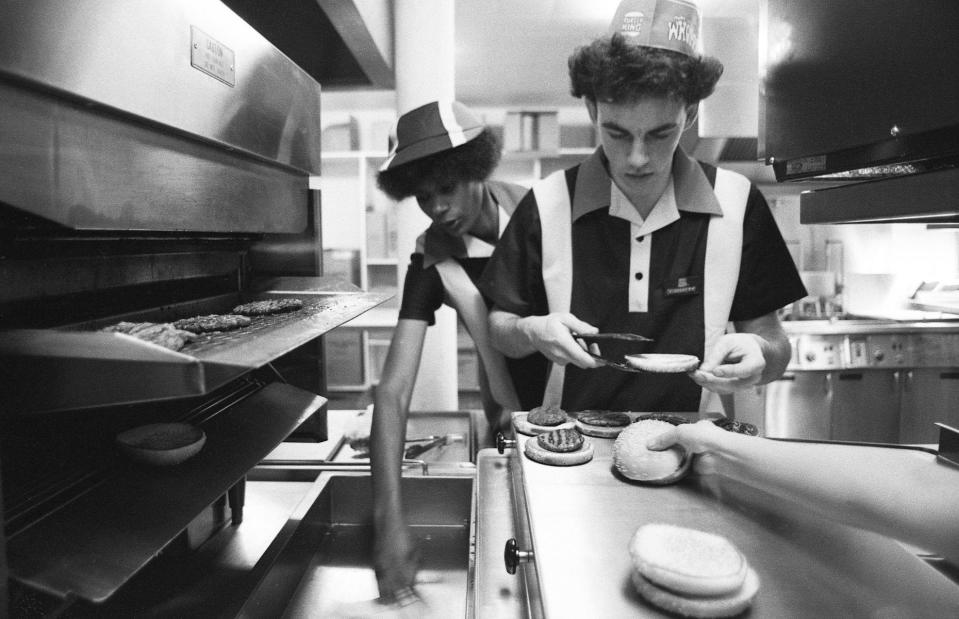
John van Hasselt-Corbis/Getty Images
Burger King’s most iconic menu item is the Whopper, which was first introduced in 1957 (more than 10 years before McDonald’s launched the Big Mac). Though it may get a seasonal update every now and then, the base design of the Whopper has remained unchanged since the 1950s: it consists of a 4oz (110g) beef patty, mayonnaise, lettuce, tomato, pickles, ketchup and sliced onion, all sandwiched into a bun. It originally sold for just 37 cents.
The King makes his TV debut
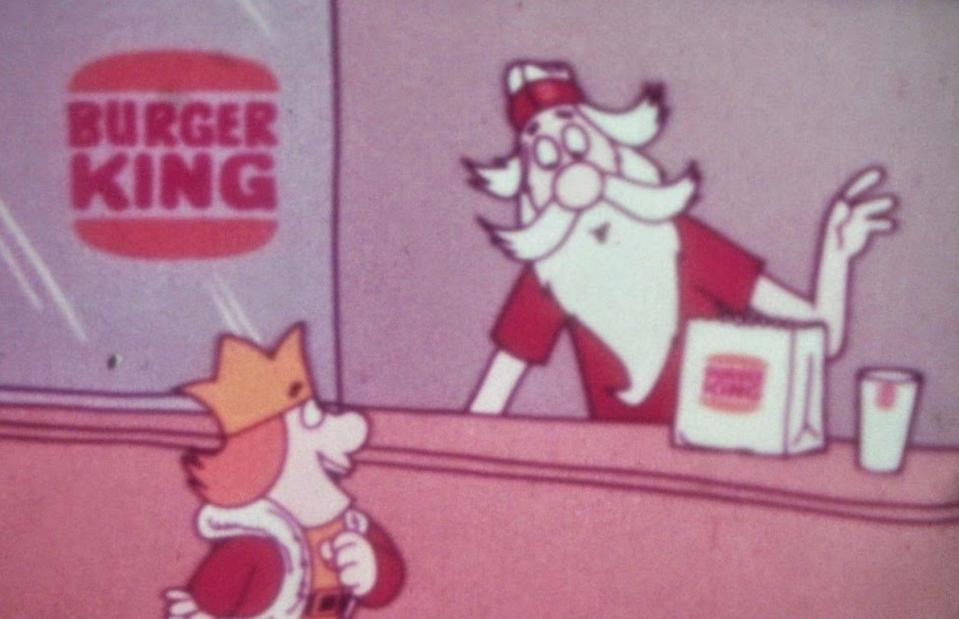
Burger King 1970 advert/RetroJunk
In 1958, Burger King released its first ever TV advert on a local Miami station, marking the start of a long history of influential commercials and expensive marketing campaigns. During the early 1970s, the company used a cartoon version of its King character, voiced by Allen Swift, to appeal to children. These adverts made use of the slogan 'Burger King, where kids are king!'
The battle of the Burger Kings
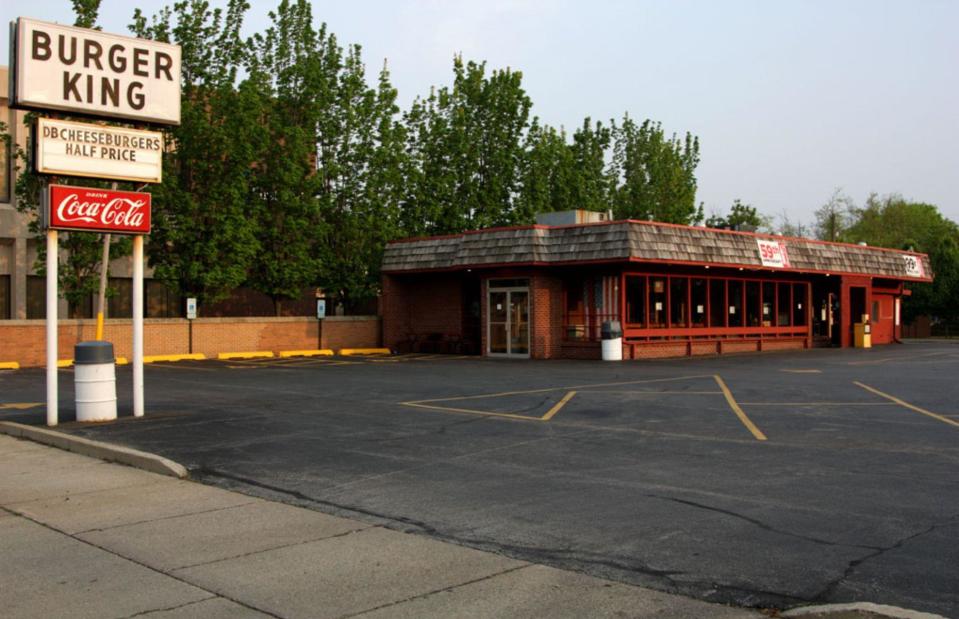
Photofudge/Wikimedia Commons/CC BY-SA 3.0
Despite its federal trademark, Burger King encountered a local 'Burger King' with an existing state trademark when expanding into Illinois in 1961. The restaurants sued one another. It was ultimately ruled that the Illinois Burger King had the right to use its name within its original location and that no Burger King chain restaurant could open within a 20-mile radius. Said Burger King is still there today (pictured here in 2011), with the closest Burger King franchise 23 miles away.
Overseas expansion
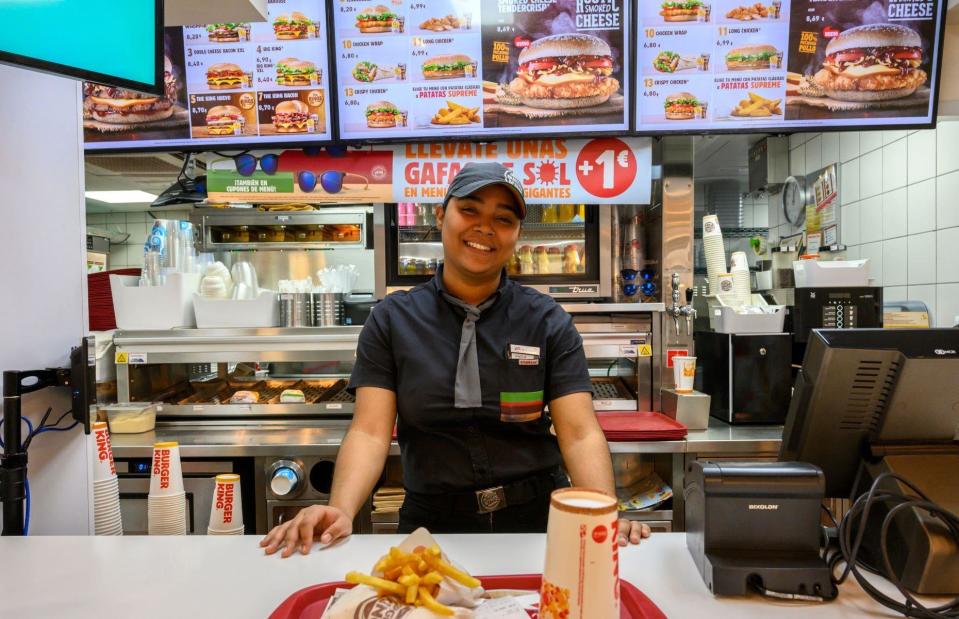
Horacio Villalobos/Getty Images
In 1963, Burger King opened its first location outside the US in Carolina, Puerto Rico. It was here that, completely by accident, the Whopper Jr. was invented – staff were forced to use small buns to make burgers because the Whopper-sized ones hadn’t arrived yet and, as a result, a fast food classic was born. International expansion continued, with openings in Canada in 1969, Australia in 1971 and the first European restaurant opening in Madrid in 1975.
Changing hands
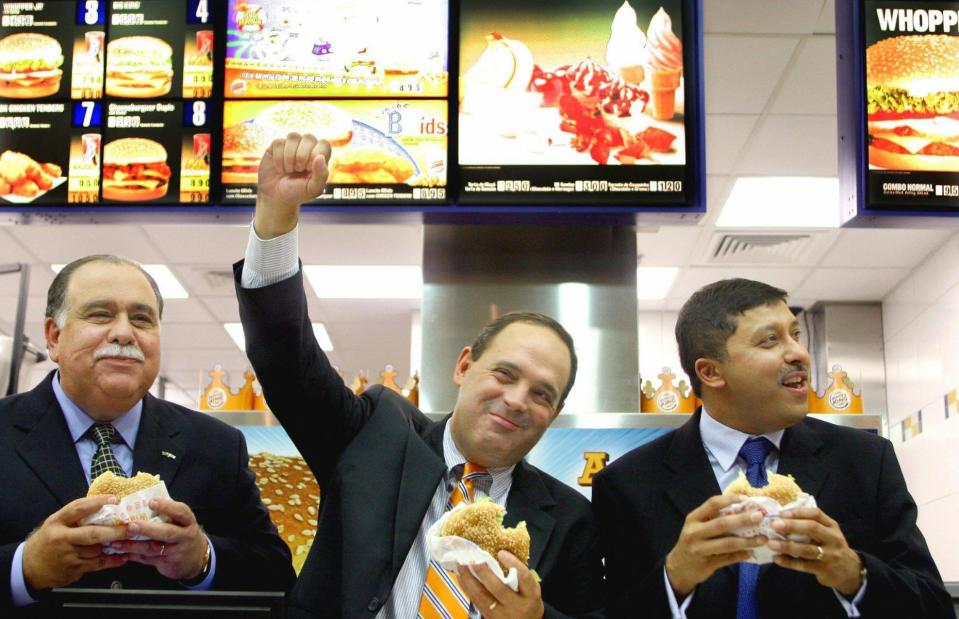
Mauricio Lima/Getty Images
Burger King has changed ownership many times over the years. After its 1959 sale, it was purchased by the Pillsbury Company in 1967, which itself was bought by British company Grand Metropolitan in 1989. Passing through more corporate hands into the early 2000s, Burger King merged with Canadian chain Tim Hortons in 2014. The two chains continue to operate separately but leverage each other’s profits. The merger led to the development of a new parent company, Restaurant Brands International (RBI).
Hungry Jack’s
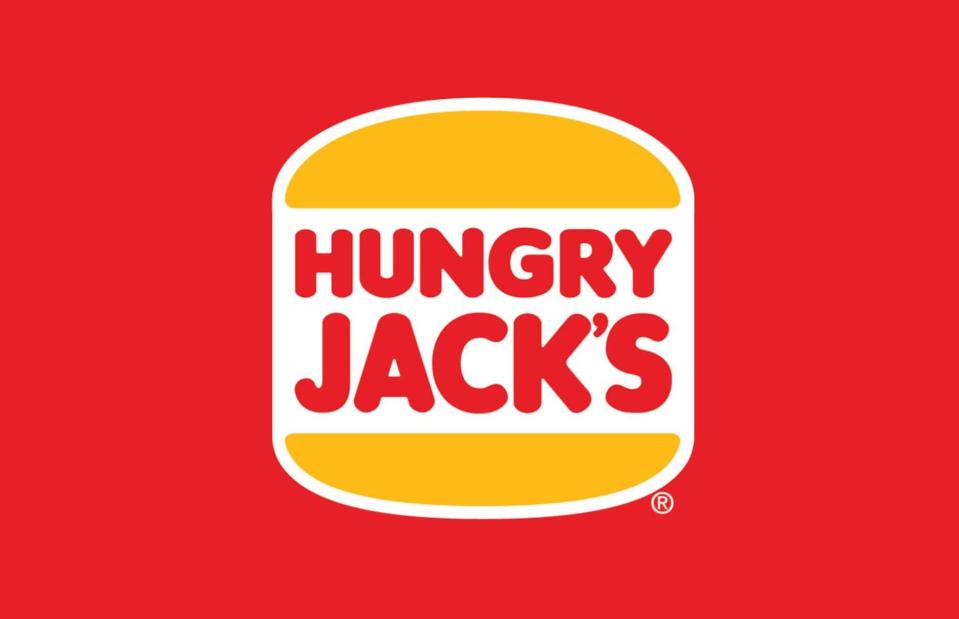
HungryJacks/Facebook
When looking to expand Down Under, Burger King came across further copyright complications: its name was already trademarked in Australia. Because of that, Burger King's Australian restaurants are instead named Hungry Jack’s, after its franchise founder Jack Cowin. Still proudly serving Whoppers, the first store opened in Perth in 1971. Today, Hungry Jack’s is the second largest Burger King franchise in the world, with around 400 Australian locations.
Have it your way
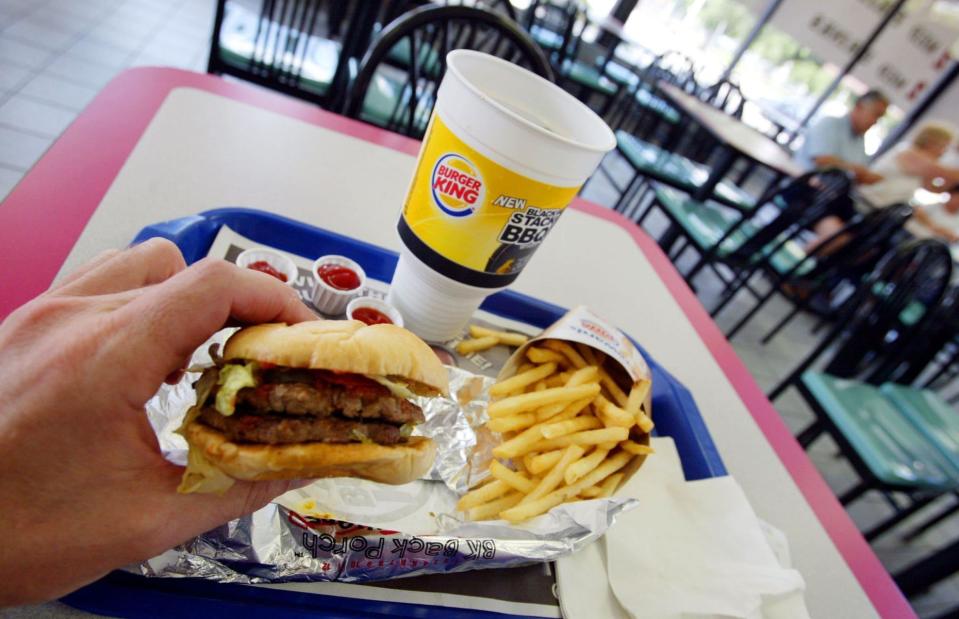
Joe Raedle/Getty Images
In 1974, Burger King launched its iconic 'Have it Your Way' slogan. The highly successful campaign was designed to emphasise that, unlike McDonald’s, Burger King would adjust its menu items to suit customer preferences: extra ketchup, no gherkin – you name it. There was even a jaunty jingle to go with it: ‘Hold the pickle, hold the lettuce, special orders don’t upset us.' The slogan was revived in the early 2000s to much commercial success.
Expansion into the UK
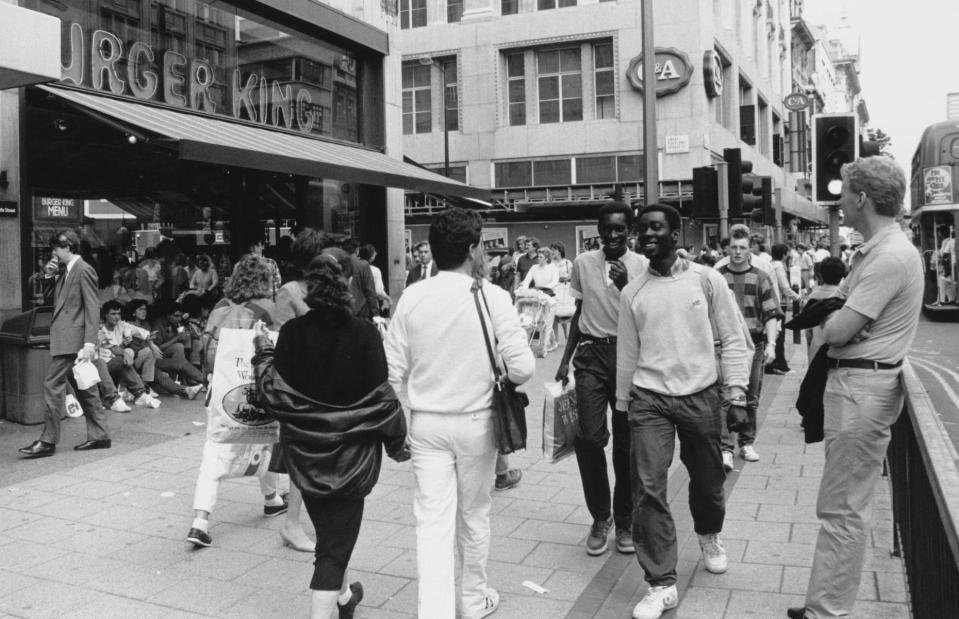
Keystone/Getty Images
Burger King opened its first UK location in 1976 in central London. Widespread notoriety came in 1989, when 150 Wimpy restaurants were converted into Burger Kings. By 1994, there were 250 Burger King restaurants across the country and in 1997 that number had almost doubled to 465, after a slew of Little Chef roadside restaurants also became Burger Kings. The picture here shows an Oxford Street Burger King branch in 1987.
The Marvelous Magical Burger King
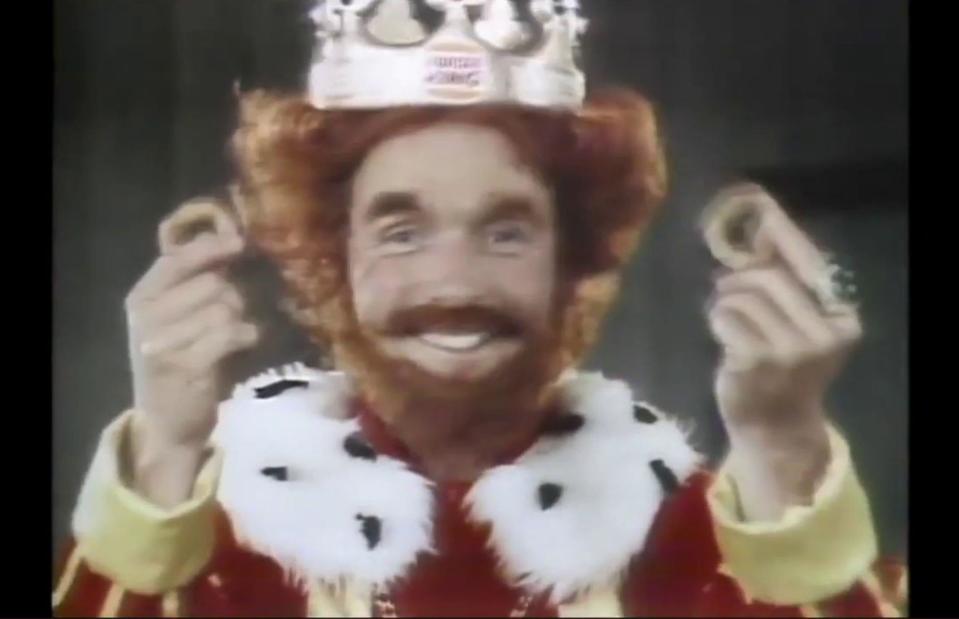
Burger King/mr. psycho/Youtube
In 1976, Burger King replaced its animated mascot with the Marvelous Magical Burger King, a Tudor-inspired monarch with a red beard who ruled the Burger King Kingdom and performed magic tricks. He was played by Dick Gjonola and his companions included Sir Shake-a-Lot (a knight that liked milkshakes) and the Burger Thing (a large puppet designed to look like a burger painting).
The most important meal of the day
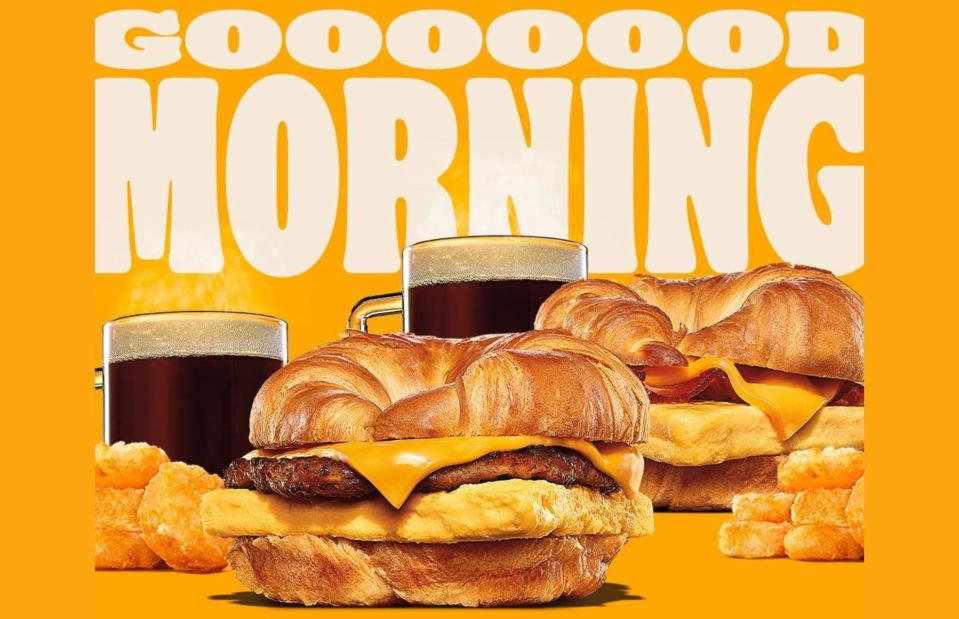
BurgerKing/Facebook
To compete with McDonald’s range of breakfast items, Burger King launched its own morning menu in 1978. The two were almost identical until 1983, when Burger King introduced the Croissan’wich: a croissant stuffed with either a sausage patty, bacon or ham, plus eggs and American-style cheese. Later adverts featured the slogan: 'Croissan'wich beats the stuffin' out of Egg McMuffin'. The item remains on the menu today.
The Original Chicken Sandwich
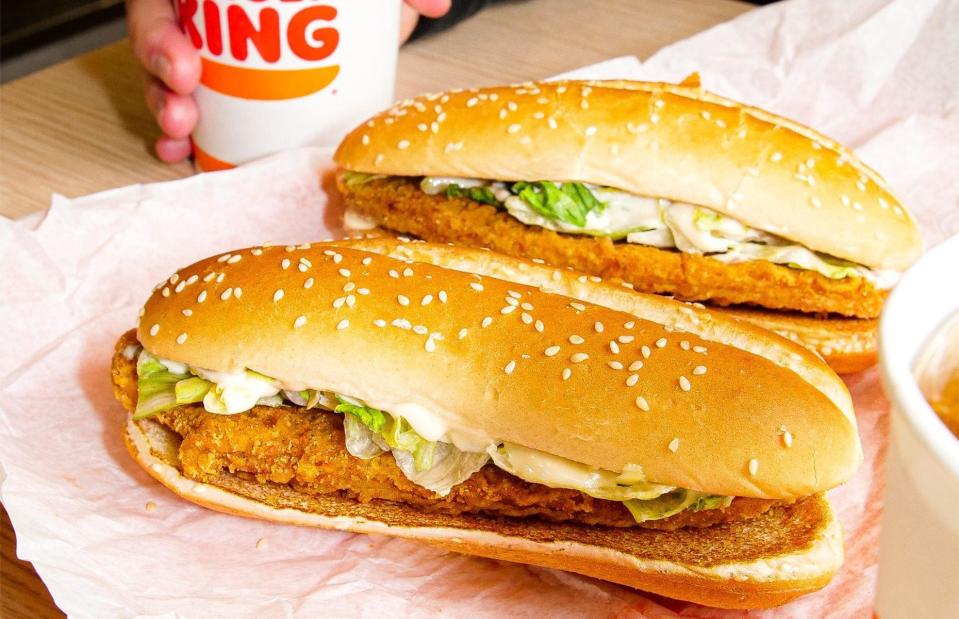
burgerkinguk/Facebook
In 1979, Burger King made one of the first attempts by a major fast food chain to specifically target a certain population demographic (adults aged 18-34) and introduced a line of speciality non-burger sandwiches. Its new chicken, steak and fish offerings increased sales by a hefty 15%. The most popular – and most enduring – of the non-burger sandwiches is the Original Chicken Sandwich, marketed as the Chicken Royale in the UK.
Health kicks
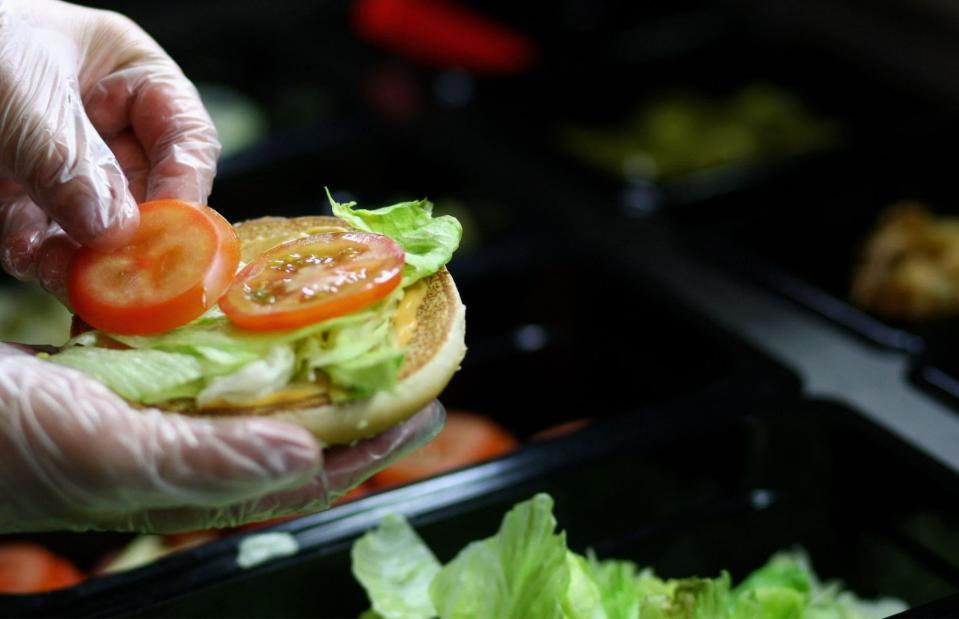
Miguel Villagran/Getty Images
In the 1980s, Burger King looked to capitalise on an increased interest in healthy eating, launching salad bars and lighter meals. In the early 2000s, there came the Low Carb Whopper, which saw the classic burger bun removed. If you’re so inclined, you can still order your burger without a bun today.
Caught in the middle
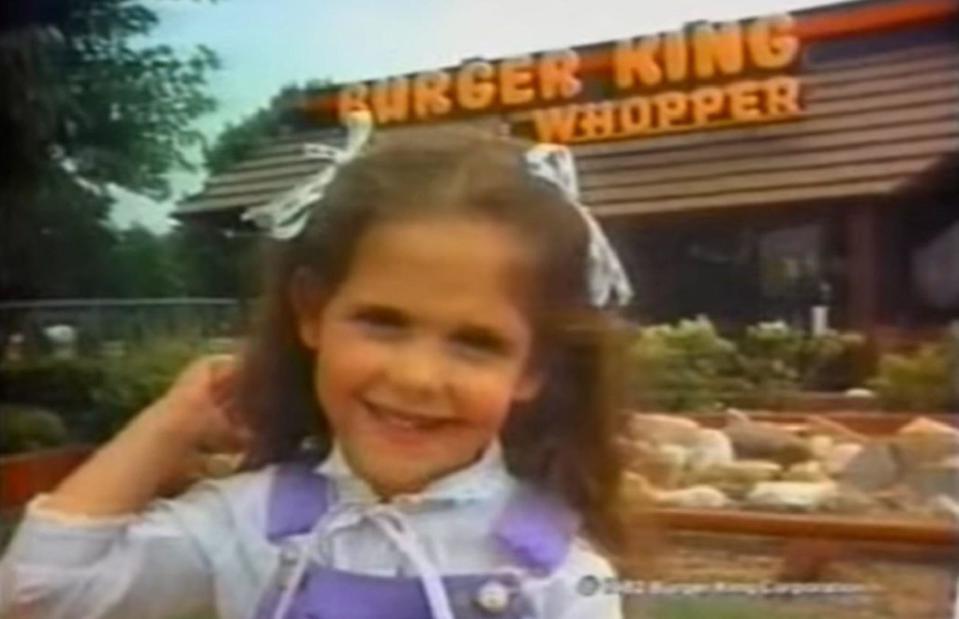
Burger King/smgvids/Youtube
Aged four years old, Sarah Michelle Gellar (of Buffy the Vampire Slayer fame) appeared in a 1981 Burger King advert proclaiming that McDonald’s burgers were 20% smaller than Burger King’s. Since this was thought to be the first time that a fast food company had directly named a rival in an advert, McDonald’s sued. Gellar, five by the time of the lawsuit, remembers being banned from eating at McDonald’s – and even being unable to go to friends’ McDonald’s birthday parties!
Where’s Herb?

Barry Iverson/Getty Images
One of Burger King’s most famous flops was the 1985 'Where’s Herb?' campaign, which was based on the premise that Herb was the only man in America who’d never eaten a Whopper. Customers were offered $5,000 (around £4,000) if they spotted Herb in a store, but by the time Herb’s appearance was revealed many people had lost interest. The expensive campaign was dropped after three months and profits fell by 40% in 1986.
Table service
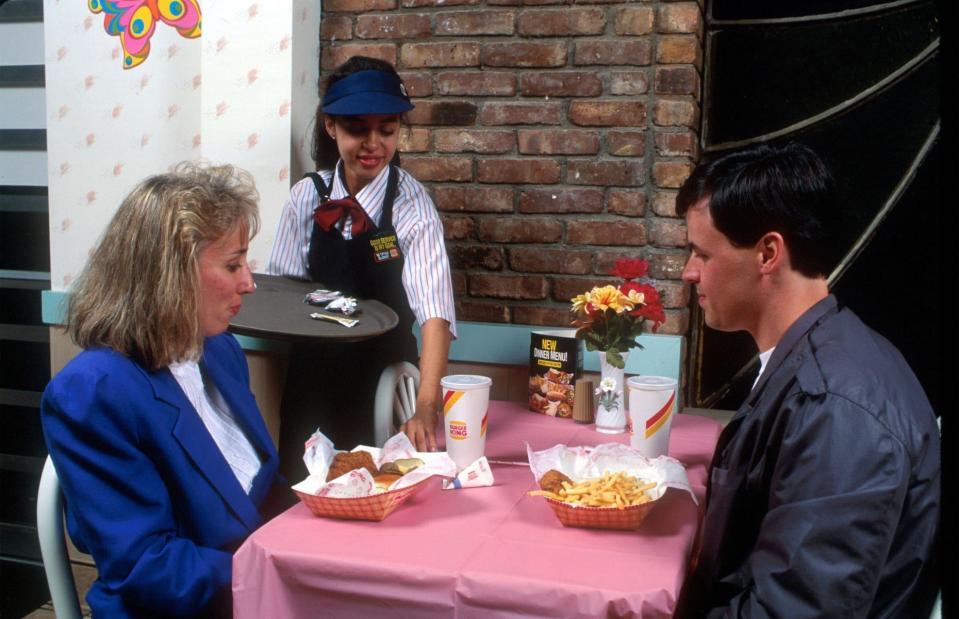
Yvonne Hemsey/Getty Images
In 1992, Burger King trialled dinnertime table service. Customers could snack on free popcorn while they waited for staff to bring them Dinner Baskets containing either a burger, a steak sandwich, a chicken fillet or some fried shrimp, plus fries or a baked potato and coleslaw. It didn't prove particularly successful and was discontinued after two years.
The creepy King

Evan Agostini/Getty Images
In 2004, an employee at Burger King’s advertising firm found a huge, hollow, 1970s-era Marvelous Magical Burger King head for sale on eBay. The head was bought and restored and featured in a new campaign, which saw an actor wearing said giant head appearing in surreal situations – think popping up to offer a Croissan’wich to a man in bed. The ads went viral.
Failed fries
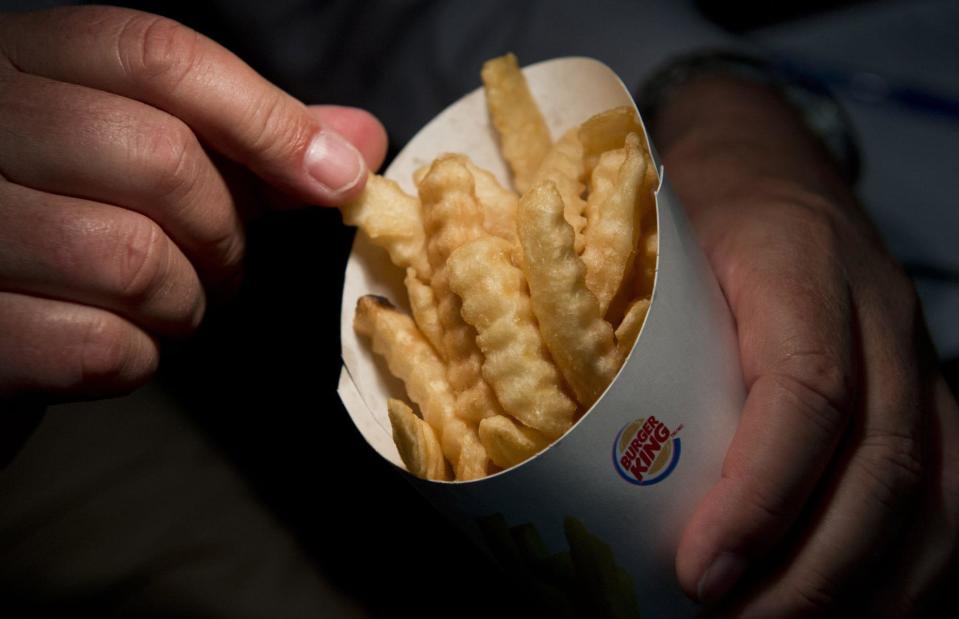
Saul Loeb/Getty Images
A notable flop for Burger King came in 2013, when it launched Satisfries: lower-fat, crinkle-cut chips designed to soak up less oil. Satisfries contained around 20% fewer calories than regular Burger King fries but proved unpopular with customers. As a result, they were quickly dropped.
The evolution of the uniform
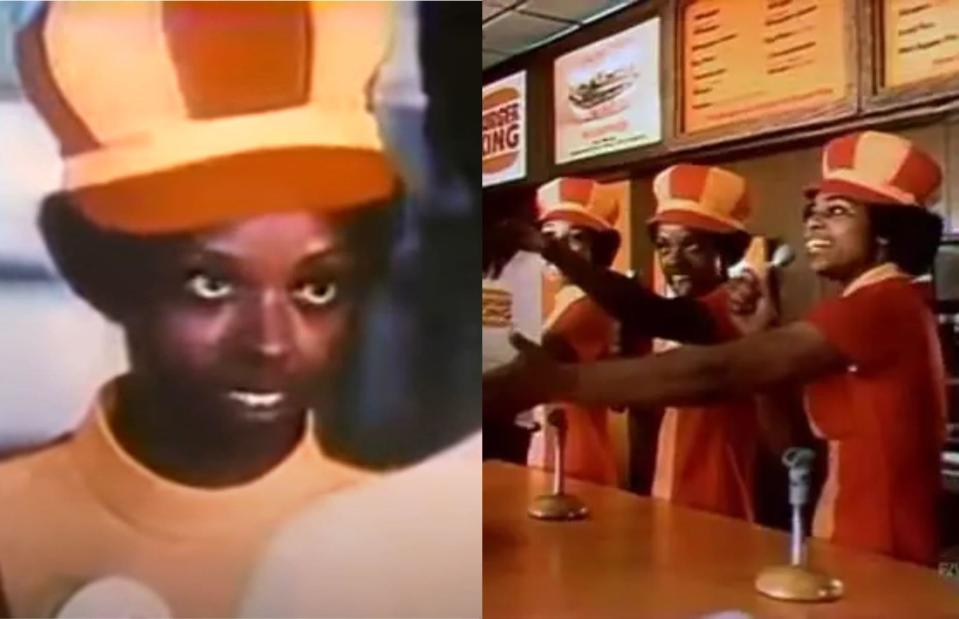
Burger King/haikarate4/Youtube
Back in the 1960s and 1970s, Burger King uniforms were orange and yellow with voluminous hats. In the 1980s, they changed to red stripes and baseball caps, while the 1990s saw the uniform turn blue. The current uniform (in place since 2015) sets the colours of the Whopper against a grey background. We'd vote for the return of those iconic hats, pictured here in an advert from 1974.
The hot dog flop
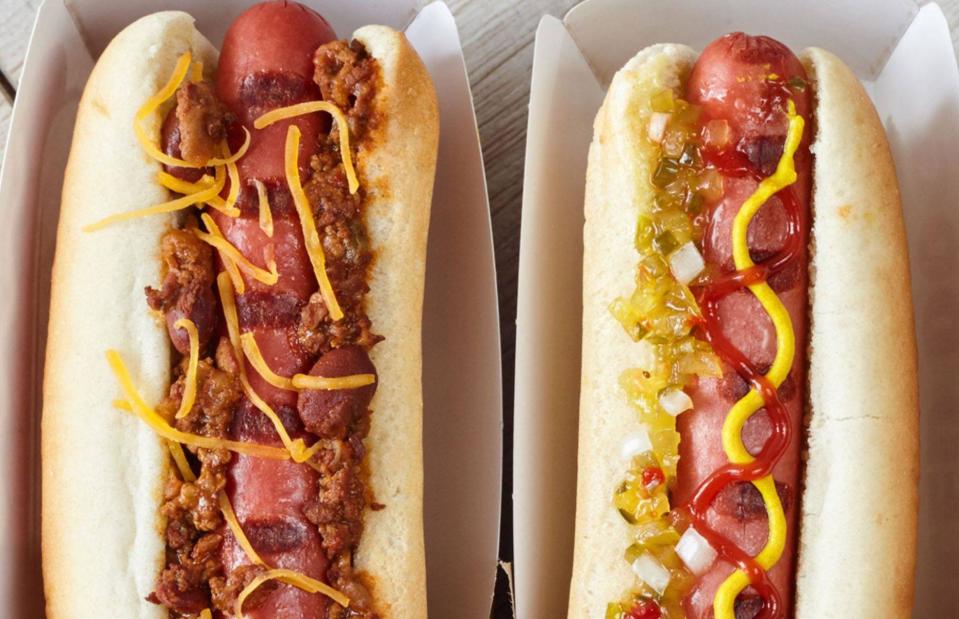
burgerking/Facebook
In 2016, Burger King announced it would be branching out into the hot dog sphere. Available in the US for a short period of time, the Classic Whopper Dog (intended to be the ‘Whopper of hot dogs’) was topped with mustard, ketchup, relish and onions, while the Chili Cheese featured the same toppings with added Cheddar and chilli. Much like McDonald’s famous failed McHotDog attempt in the 1990s and early 2010s, BK’s lack of success here reiterated that the hot dog market remained elusive for fast food chains.
Weird combos
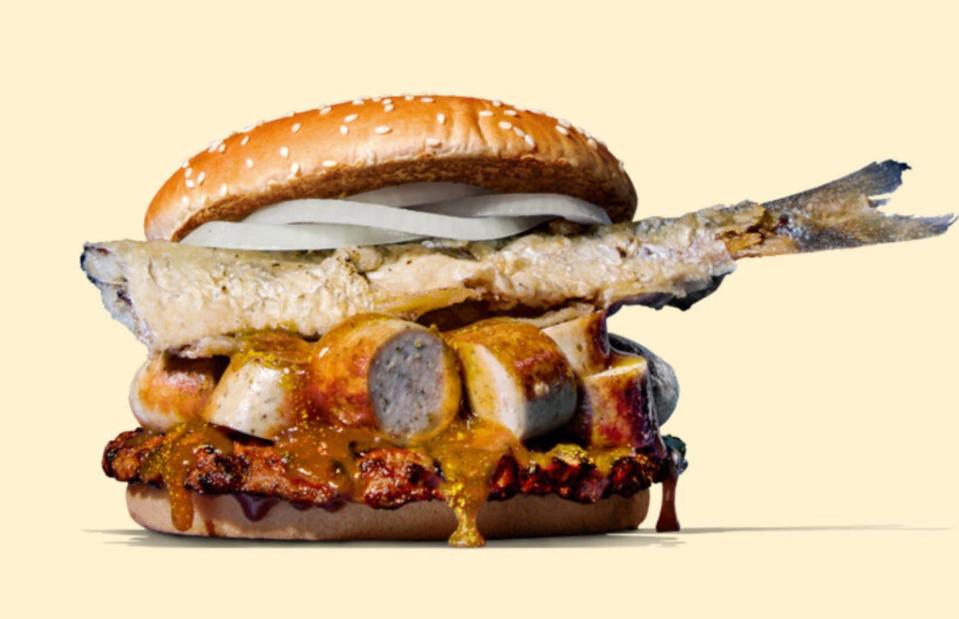
BurgerKing.Deutschland/Facebook
Burger King has experimented with some eccentric menu items in its time. Highlights include 2012’s bacon ice cream sundaes, 2016’s Whopperrito (a Whopper in a burrito) and 2010’s Sprout Surprise (a UK-only Whopper served with Brussels sprouts). In May 2022, Burger King Germany launched a pregnancy cravings menu, which featured burgers filled with vanilla ice cream and olives, cake and beef, and an option with currywurst and fried herring. The menu was extremely limited edition, though, and was only offered on Mother's Day at select Berlin restaurants.
WhopperCoin
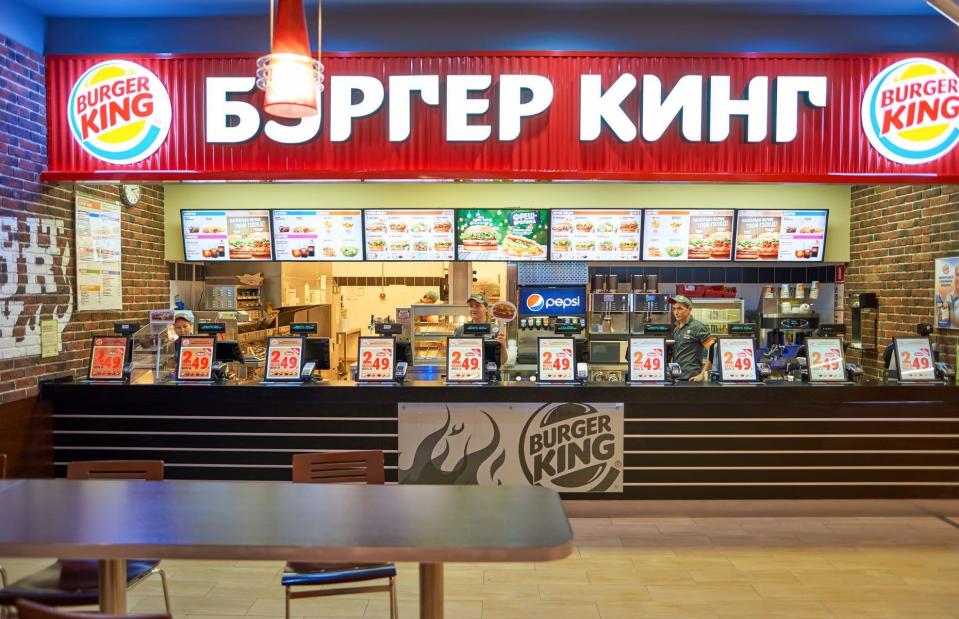
Sorbis/Shutterstock
In 2017, the Russian branch of Burger King launched its own cryptocurrency, WhopperCoin, as a kind of loyalty scheme. This didn't prove successful; by 2018, the value of a WhopperCoin had fallen to $0.002 and, by the end of 2019, trading volume had declined to zero.
The one-cent Whopper

S3studio/Getty Images
To promote its mobile app in the US, Burger King held a cheeky nine-day campaign in 2018 that – using the app’s location data – offered customers inside McDonald’s restaurants the opportunity to buy a Whopper for just a cent, if they could get to a Burger King within the hour. Burger King’s app was downloaded more than 1.5 million times and became the number one app in both the Apple and Google Play stores.
Eat like Andy
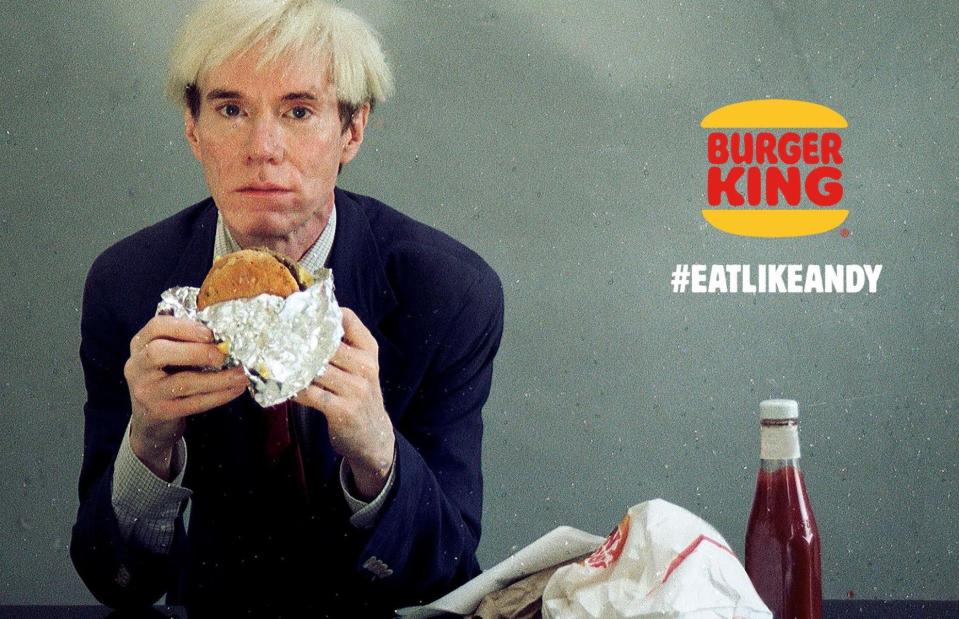
BurgerKing/Facebook
In February 2019, Burger King obtained the rights to footage of Andy Warhol eating a Whopper back in 1982, which they used in a Super Bowl advert with the hashtag #EatLikeAndy. US customers ordering that day via DoorDash could select an Andy Warhol Mystery Box, including a plastic bottle of ketchup and a platinum Andy Warhol wig.
The Impossible Whopper
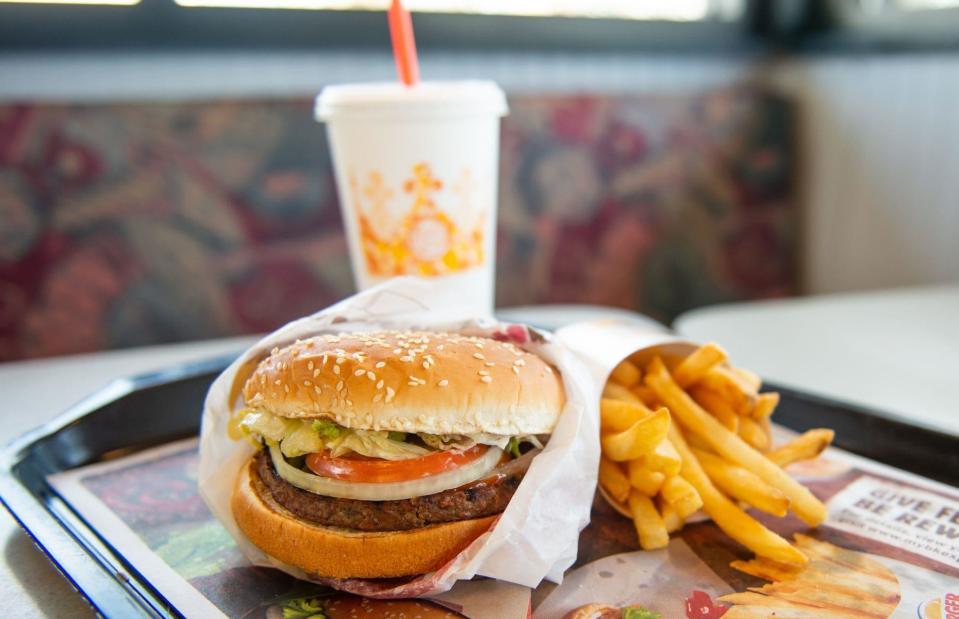
Michael Thomas/Getty Images
Burger King made history by introducing the entirely plant-based Impossible Whopper in August 2019, leading the way for copycat vegan fast food options. Using a faux-beef soy patty from Impossible Foods, the Impossible Whopper has been very successful, though some criticise the fact that it is still cooked on the same grill as meat patties.
Signs of the times
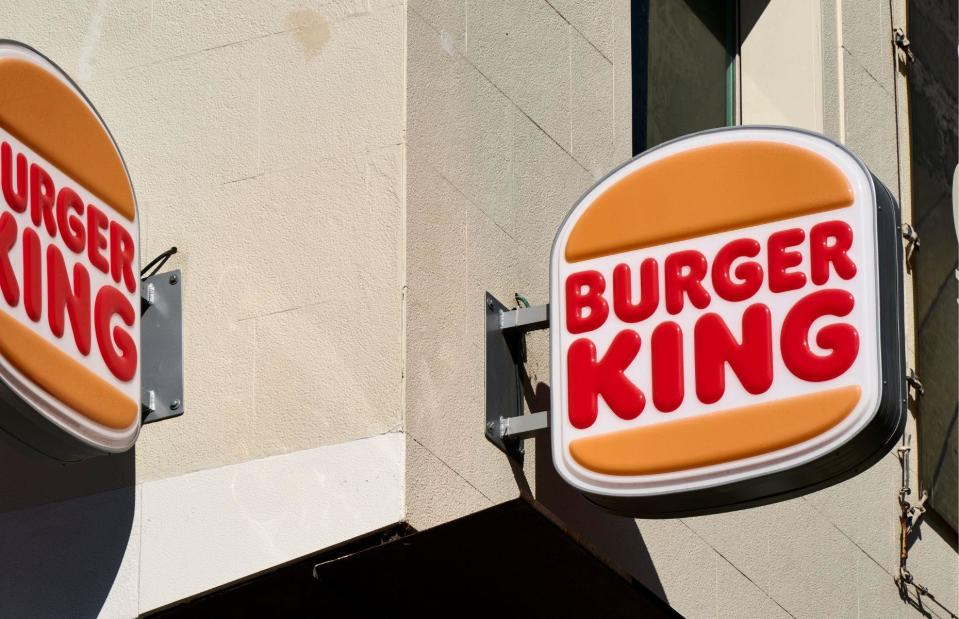
Horacio Villalobos/Getty Images
The first Burger King logo was a simple half sun. This changed to the sitting King drawing in 1955 and in 1969 became the company name sandwiched between two bun halves. This logo remained roughly the same until 1999, when it was redesigned; the bun halves were set on an angle and surrounded by a blue circle. In 2021, Burger King returned to its 1969-99 design, pictured here.
Whoppers for life
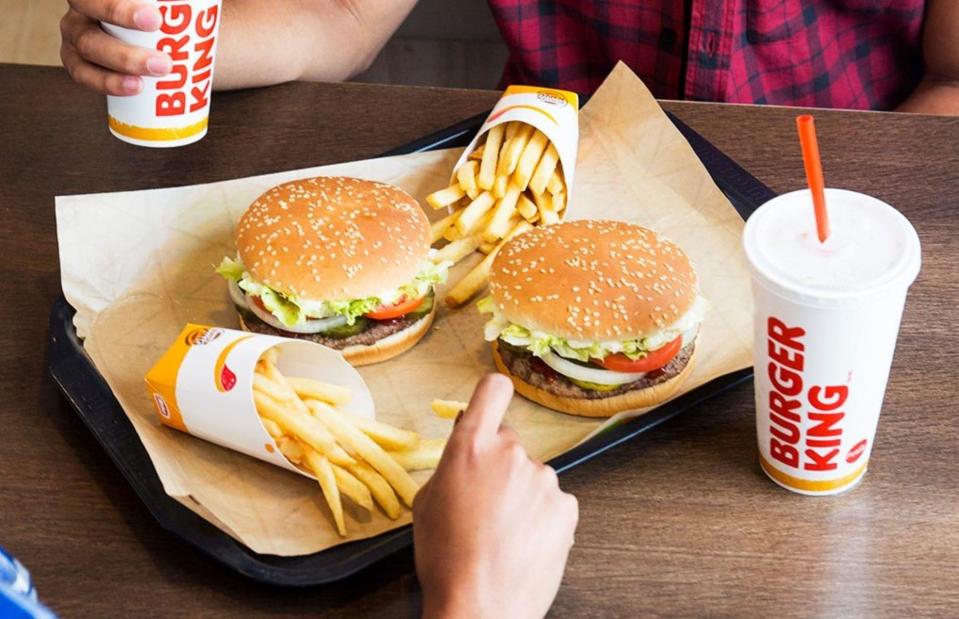
BurgerKing/Facebook
Just like the McDonald’s Gold Card and the Nando’s Black Card, Burger King has its own Crown Card, which grants a lifetime of free food to very special friends of the franchise. With only 12 people reported to own one, this ticket to endless Whoppers is exclusive indeed – named recipients include Robert Downey Jr., Hugh Laurie and George Lucas.
Stylish social distancing
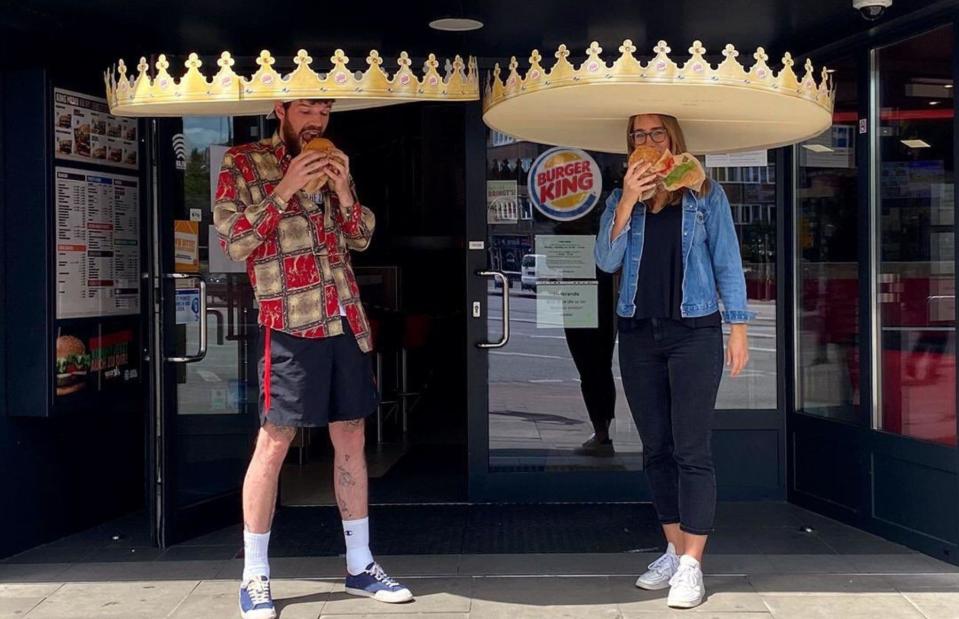
BurgerKing/Twitter
In May 2020, Burger King made headlines by introducing novelty, oversized versions of its cardboard crown to encourage social distancing during the COVID-19 pandemic. Though they were only available at select stores in Germany, photos of customers sporting the crowns spread quickly across social media.
Into the future
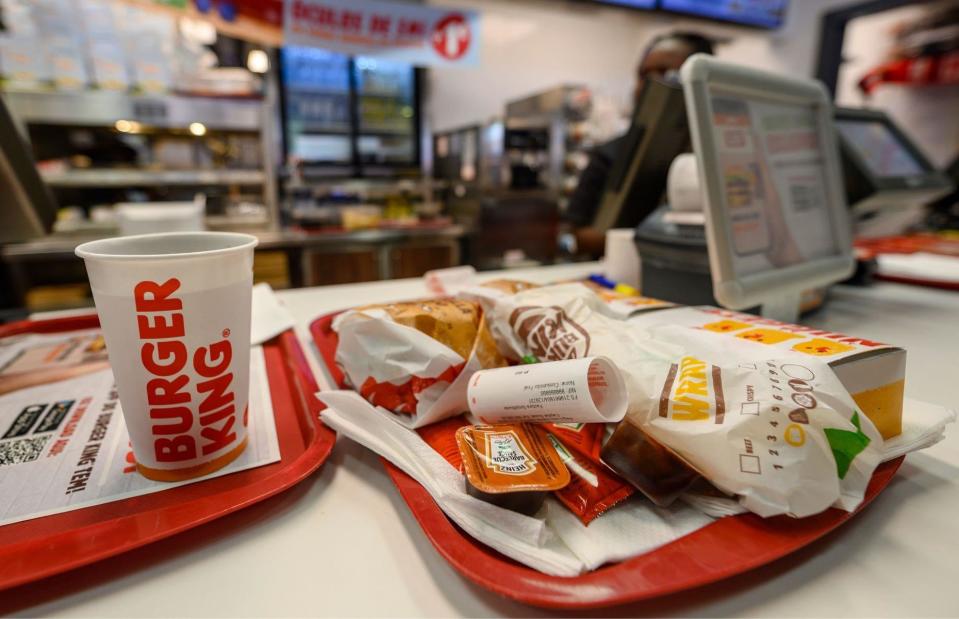
Horacio Villalobos/Getty Images
Today, Burger King has an app, self-service kiosks, vegan burgers and more – and is still capable of causing a stir. In early summer 2024, the chain entered the so-called fast food value wars, announcing that it would be launching its very own meal deal (ahead of rival McDonald’s). The $5 Your Way Meal will reportedly include a choice of one of three sandwiches, accompanied by nuggets, fries and a drink.
Now discover the incredible story of how McDonald's took over the world
Last updated by Lottie Woodrow.


